For The Cannabis PROFESSIONAL



For The Cannabis PROFESSIONAL


With a passion for healthcare and a commitment to justice, this industry trailblazer is ensuring women’s voices are heard—loud and clear.
THESE FEMALE FOUNDERS HAVE CHANGED THE GAME
AND WHY BRANDS MUST LISTEN!
THE ART OF PUBLICITY
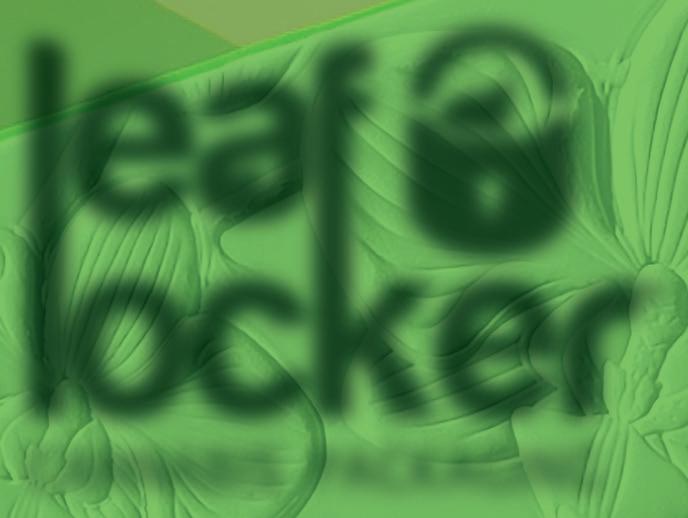









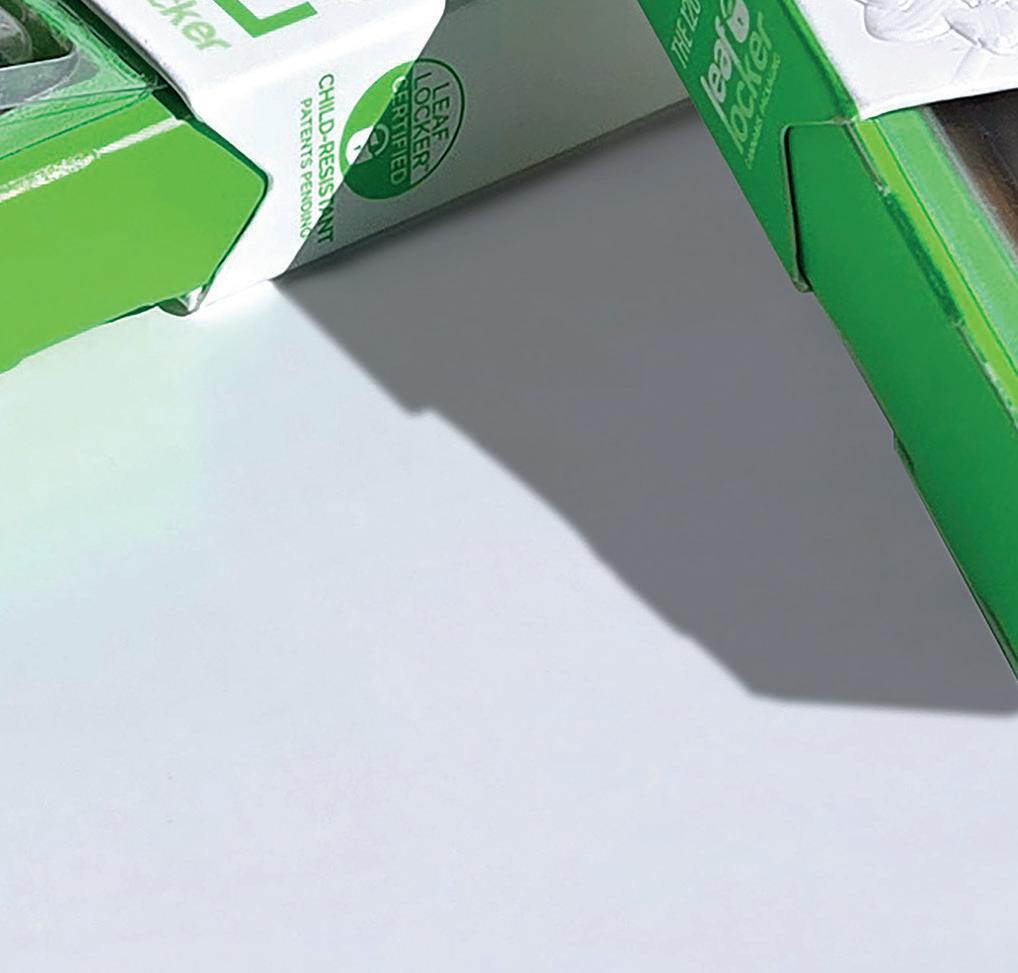

CLICK ON THE COVER TO VIEW


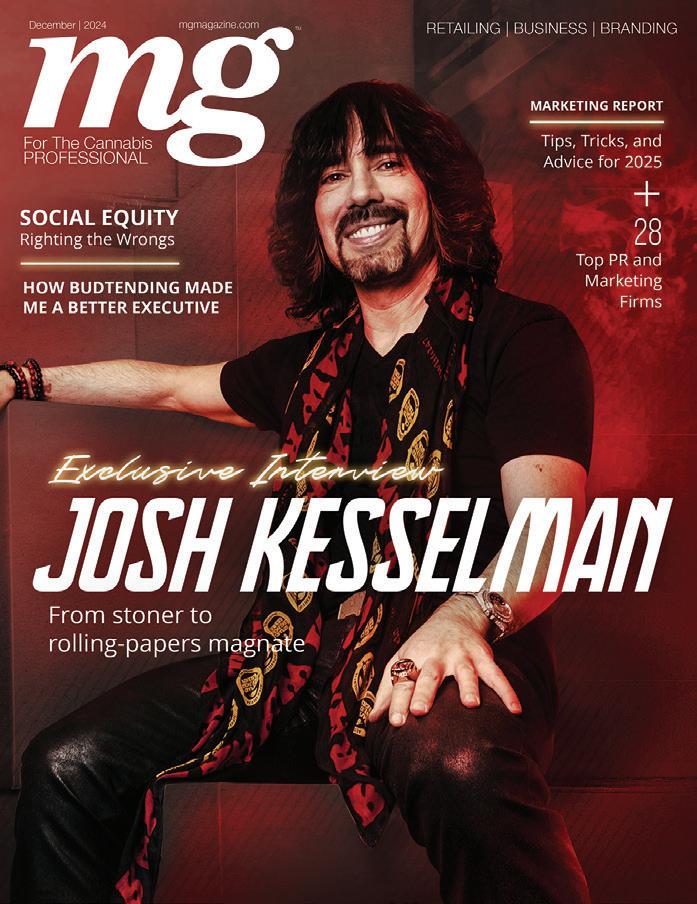





JOIN THE WAITLIST NOW





Introducing SB1 (Sensi Boost 1) — Advanced Nutrients’ 8th-Generation Breakthrough Brix, Resin & Terpene
Enhancer
Supercharge your grow with SB1 for massive, sugar-coated, resin-saturated buds exploding with flavor and aroma.
After 25+ years of research, we’ve cracked the code on crafting the sweetest, gooiest, most terpene-rich flower possible.

: Breakthrough nanotechnology enables direct sugar uptake, maximizing unsurpassed resin production and terpene enhancement. Unlike conventional products with oversized sugar molecules that only feed substrate microbes, NanoCarb’s nanosized carbohydrates are absorbed directly into your plants, fueling rapid growth, significantly enriching flavor profiles, and
: Advanced Nutrients’ exclusive compound derived from fermented sugarcane extracts. This powerful biostimulant unlocks your flower’s flavor, quality, and bag appeal like nothing else on
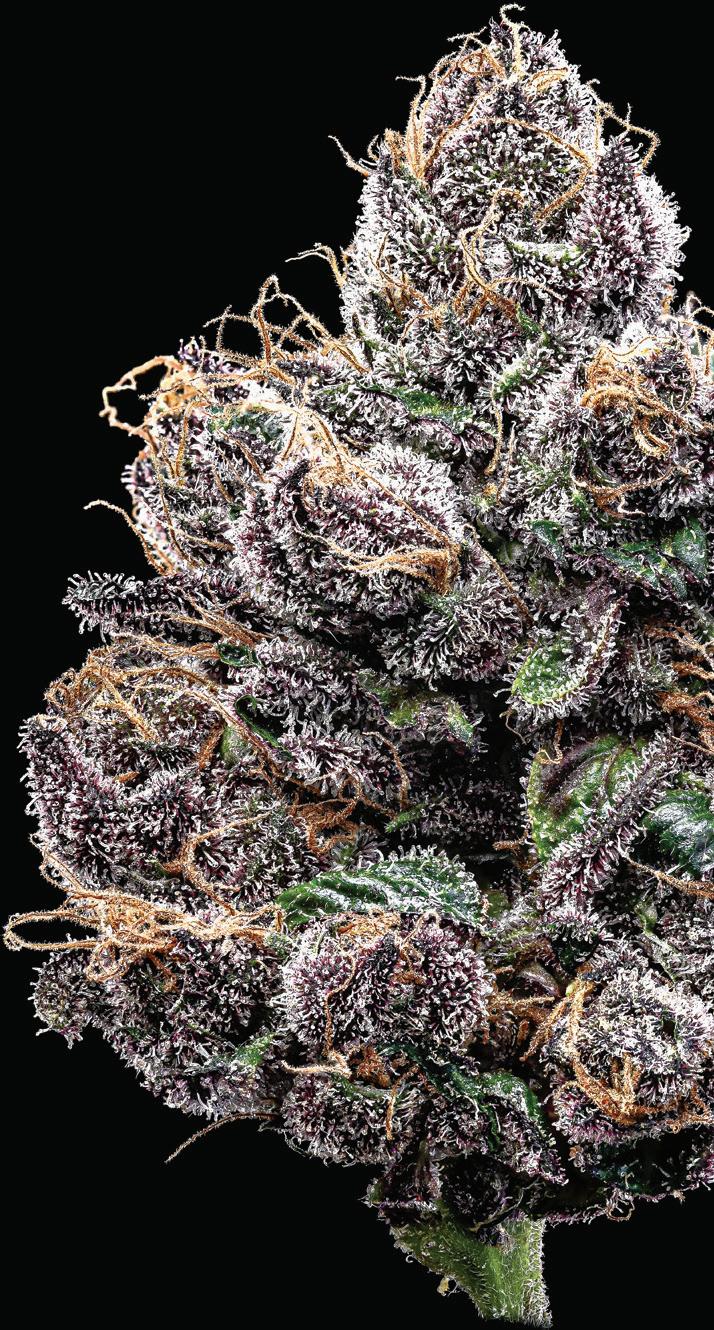




like


With over 25 years of science-backed innovation, Advanced Nutrients delivers solutions that growers in over 120 countries maximize crop value. Don’t waste your time and money on subpar carbohydrates your plants can’t absorb. Harness SB1’s cutting-edge technology and experience heavier harvests of the frostiest, most mouthwatering flower you’ve ever produced.




















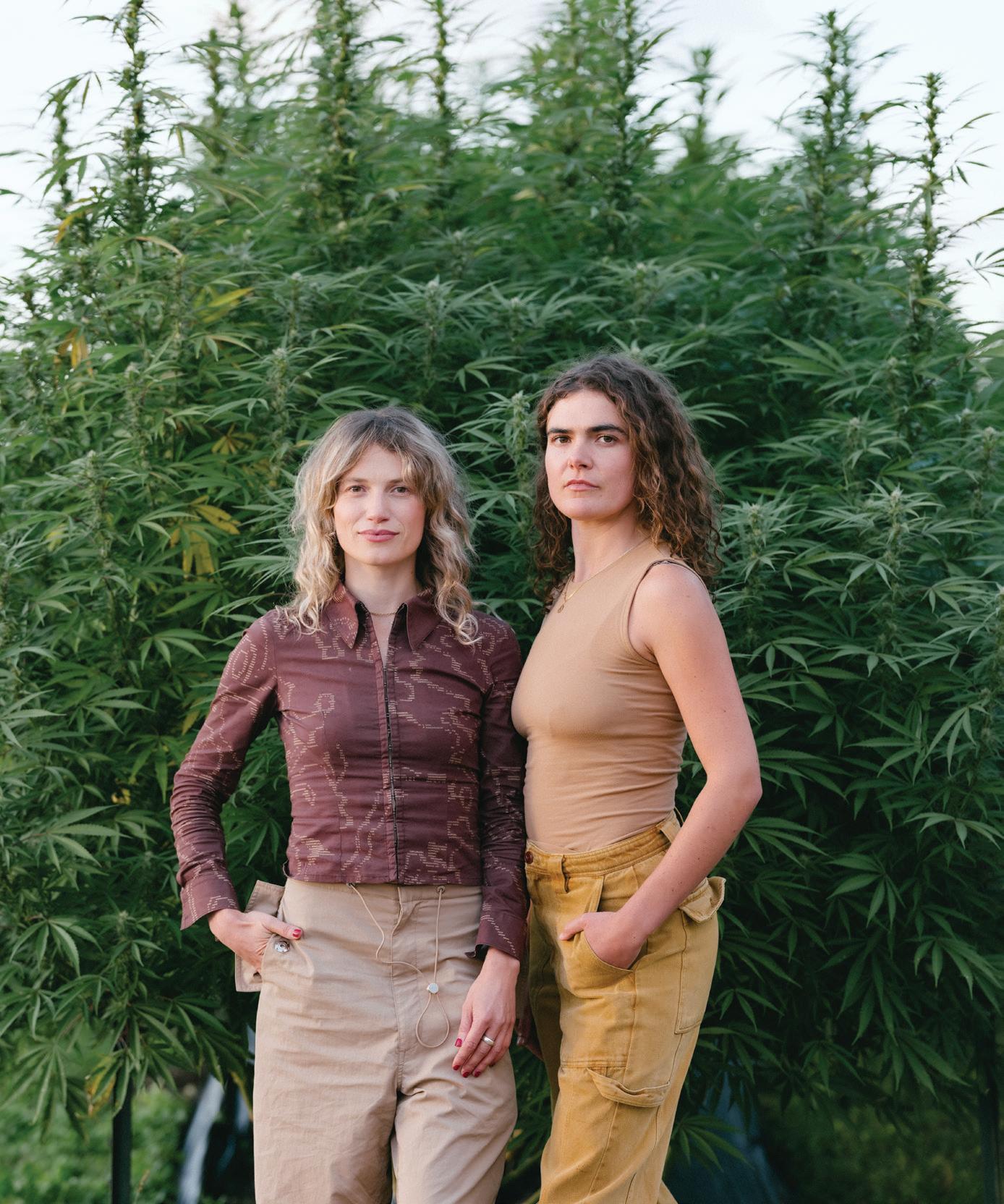
THE NEWSROOM
News, data, trends, forecasts, and other tidbits for the well-informed professional.
GUEST COLUMN
Understanding what drives women’s purchasing decisions can help marketers be more effective.
RETAILING
At Illinois’ Revolution dispensary chain, designers focus on the ways form enhances function.
BUDTENDER TALK
The Artist Tree’s Jackie Howze believes in the transformative power of the plant.
MARKETING
How do professionals build credibility, gain media coverage, and avoid common PR mistakes?
CULTIVATION
These six essential factors can help cultivators identify superior genetics.
DATA
Women and men experience the plant differently. Here’s what that means for your business.
SOCIAL STATUS
Top female influencers and accounts catering to women.

Women bring unique perspectives to the brands they create. Adaptable, empathetic, and devoted to their visions, nine women reveal how they launched, grew, and sustain thriving companies in an industry where female executives are underrepresented.
As a biomedical researcher, Chanda Macias, PhD, believes in the healing power of the plant, especially for women. As a business leader, she advocates for women’s empowerment. From her vantage point in Washington, DC, she shares her perspective on gender politics, legalization, and what lies ahead for the industry.

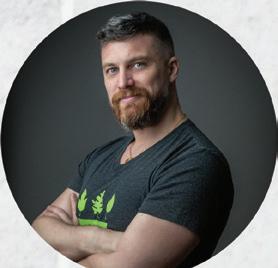
A native of Lyon, France, awardwinning visual artist Denis Largeron is a former model who flipped the script and now makes magic behind the lens. Based in Washington, DC, he has photographed everything from high-fashion layouts to magazine covers, catalogs, and special events. See his work at DenisLargeron. com
When the Fourteenth Amendment to the United States Constitution was ratified in 1868, Congress and the courts generally agreed the Equal Protection Clause applied to formerly enslaved men but not to women of any race. At the time, many states still barred women from owning property, attending public school, signing contracts, voting, and participating in other aspects of society. Women generally were considered the legal wards of their husbands, fathers, or other male relatives and enjoyed only the rights and privileges those men allowed.
That began to change when the Nineteenth Amendment enfranchised women in 1920. In 1923, National Women’s Party leader Alice Paul and feminist lawyer Crystal Eastman drafted the first version of the Equal Rights Amendment, which—because women still were not taken seriously—was presented to Congress by Kansas Republican Senator Charles Curtis. The ERA was reintroduced in every session from then until 1971, when lawyer, judge, former lieutenant governor, and Democratic U.S. Representative from Michigan Martha Wright Griffiths finally pushed a version through both houses of Congress. The amendment was ratified by thirty-five states before expiring in 1982 for want of three votes.
The ERA’s eloquently simple text— “Equality of rights under the law shall not
be denied or abridged by the United States or by any State on account of sex”—should not be controversial. Yet, even today, some object to the amendment because they worry women would lose “protection” and financial support provided by men. Others express concern the amendment would subject women to military conscription. The most common reason for opposing the ERA is that women’s rights already are guaranteed by the Fourteenth Amendment’s Equal Protection Clause.
But it’s important to realize the Supreme Court did not rule arbitrary gender discrimination unconstitutional until Reed v. Reed in 1971. Today’s “originalist” court may not respect such recent precedent.
Gender discrimination and bias are stubborn. In 2025, women face increasing efforts to restrict their autonomy and participation in the public square. Nevertheless, women like Dr. Chanda Macias and the business founders in this month’s feature persist, making powerful statements about the indispensable roles women play in commerce, politics, science, and education.
Women persist. As an industry, we should be thankful they do.

Kathee Brewer Editorial Director







TARA COOMANS
The founder and CEO of Avaans Media, Tara Coomans is an award-winning communications professional, marketing strategist, and serial entrepreneur specializing in bespoke public relations for hyper-growth companies and emerging industries including drones, cannabis, and artificial intelligence. AvaansMedia.com

With more than a decade of hands-on experience managing large teams in greenhouse, indoor, and outdoor environments, Chris O’Ferrell is co-founder of CO-LAB Cannabis Consulting. He co-authored >100g/ sqft: The New Cultivation Standard, a detailed guide to cultivation that reveals the science of growth. co-labcannabis.com, GreaterThan100g.com

DAVID KOOI
Jointly chief executive officer and co-founder David Kooi is dedicated to transforming the way cannabis is experienced and understood. He champions the concept of purposeful consumption, leveraging data-driven insights to enhance both consumer and retailer experiences. JointlyBetter.com

LUCA BOLDRINI
The co-founder of CO-LAB Cannabis Consulting and co-author of >100g/sqft: The New Cultivation Standard, Luca Boldrini launched his career by self-funding multiple hydroponic sites in California before designing and managing one of Colorado’s largest indoor deep-water culture facilities. co-labcannabis.com, GreaterThan100g.com




Editorial Director Kathee Brewer editorial@inc-media.com
Creative Director Angela Derasmo
Digital Editor Jeff Hale
Digital Strategist Dexter Nelson
Circulation Manager Faith Roberts
Contributing Writers Alyson Jaen Esq., Anthony Coniglio, Brendan McKee, Chris O’Ferrell, Christopher Jones, Danny Reed, David Kooi, David Sandelman, Gary Allen, Jay Virdi, Justin M. Brandt Esq., Kevin Hart, Kim Prince, Kris Krane, Lance C. Lambert, Laura A. Bianchi Esq., Luca Boldrini, Marc Beginin Esq., Michael Mejer, Mitchel Chargo Esq., Rachel Gillette Esq., Rachel Goldman, Ricardo Baca, Richard Proud, Robert T. Hoban Esq., Ruth Rauls Esq., Ryan Hurley Esq., Scott Johnson Esq., Scott Thomas, Shane Johnson MD, Shawna Seldon McGregor, Stacy Litke, Sue Dehnam, Sundie Seefried, Tara Coomans, Taylor Engle
Artists/Photographers Denis Largeron, Ryan Beshel, Kira Derryberry, Mike Rosati, Christine Bishop
ADVERTISING SALES & CLIENT SERVICES
BRANDI MESTA
Senior Account Executive
Brandi@inc-media.com (424) 703-3198
BUSINESS OFFICES
Chief Executive Darren Roberts
Tech Architect Travis Abeyta Accounting Diane Sarmiento, Brittany Gambrell
Subscriptions subscribe.mgmagazine.com
Back Issues store.mgmagazine.com
Mailing Address
mg Magazine
23055 Sherman Way, Box 5069 West Hills, CA 91308 (310) 421-1860 hello@inc-media.com
MEG CASHEL
Account Manager
Meg@inc-media.com (424) 246-8912
mg Magazine: For The Cannabis Professional Vol.11, No.3 (ISSN 2379-1659) is published monthly by Incunabulum LLC, located at 23055 Sherman Way, No. 5069, West Hills CA 91308. Periodicals Postage Paid at Las Vegas Post O ce and additional mailing locations. POSTMASTER: Send all UAA to CFS. NON-POSTAL AND MILITARY FACILITIES: Send address corrections to mg Magazine, 23055 Sherman Way, No. 5069, West Hills CA 91308.
mg is printed in the USA and all rights are reserved. © 2025 by Incunabulum LLC. mg considers its sources reliable and verifies as much data as possible, although reporting inaccuracies can occur; consequently, readers using this information do so at their own risk. Each business opportunity and/or investment inherently contains criteria understanding that the publisher is not rendering legal or financial advice. Neither Incunabulum LLC nor its employees accept any responsibility whatsoever for contributors’ activities or content provided. All letters sent to mg Magazine will be treated as unconditionally assigned for publication, copyright purposes, and use in any publication or brochure and are subject to mg’s unrestricted right to edit and comment.



WASHINGTON – U.S. President Donald Trump appointed criminal justice reform advocate Alice Marie Johnson as the nation’s first “pardon czar.” Johnson, 69, served twenty-two years of a life-without-parole sentence for cocaine trafficking and money laundering before receiving a commutation from Trump in 2018 and a full pardon in 2020.
The role is an unpaid advisory position.
Trump called Johnson “an inspiration” during a Black History Month presser at the White House, but it is unclear how much sway she will have on his decisions. The day after appointing the pardon czar, Trump repeated a talking point he frequently mentioned on the campaign trail: “Drug dealers deserve the death penalty.” The president also has promoted racially biased stop-and-frisk policies and supported incarcerating Americans in El Salvadoran prisons where human rights abuses allegedly are rampant.
Johnson told Fox News Trump, during his previous administration, granted clemency to five people at her recommendation. “What’s happening in this nation is sending a message to the world that we care about the least of these people,” she said following her appointment.
Among women
are heavily influenced by price. want detailed product information.
Despite the governor’s threat to veto, the New Hampshire House of Representatives passed a Republican-led bill to legalize possession and use of recreational cannabis. The measure would remove the substance from the state’s criminal code but not establish a commercial market or regulatory scheme—an oversight some fear would lead to widespread unregulated cultivation and sales.
(Source: YouGov)
who use medical cannabis to treat chronic pain exhibit a decreased reliance on prescription medications and experience “clinically significant improvements in pain, sleep, and quality of life,” according to a new Canadian study published in the scientific journal Cannabis. The study followed a cohort of more than 200 patients with an average age of 67 for six months.



“


Having different life experiences and backgrounds to bring to a problem leads to more effective and less myopic problem-solving, so diversity absolutely is important.
— Kim Rivers, founder and CEO, Trulieve

“


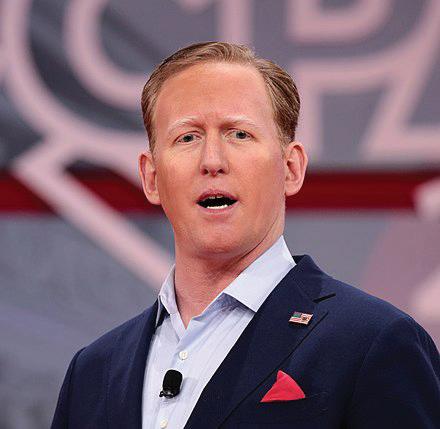
Robert J. O’Neill, the former Navy SEAL whose claim to have killed al Qaeda leader Osam bin Laden remains controversial, has taken aim at the legal cannabis industry. O’Neill founded Operator Canna Co., a New York company targeting veterans with products like Warrior Sativa, Shooter Hybrid, and Front Toward Enemy.
Part of CV Sciences’ growing Aura collection, brand-new, fast-acting +PlusCBD Fizz Aura comprises 2.5mg THC tablets that may be added to water or seltzer to create an uplifting, bubbly beverage with zesty lemon flavor. Crafted with premium hemp extract, the tablets are vegan, gluten-free, and available nationwide. pluscbdoil.com


The indomitable Wiz Khalifa launched his signature line of rolling papers in February. Crafted in Spain exclusively for the brand, the thin, all-natural papers are the same wraps used to produce Khalifa Kush pre-rolls. According to the company, the repeating KK watermark, applied in a diamond pattern, ensures a clean, even burn. khalifarollingapers.com
Newly confirmed Health and Human Services Secretary Robert F. Kennedy Jr., once a staunch supporter of legalization, now thinks high-potency cannabis could have “catastrophic impacts” on consumers. At a Republican senator’s urging, he recently vowed to “follow the science on the harms of marijuana.”
I don’t understand how people can die all the time from alcohol poisoning, yet pot is so stigmatized.”
—Amanda Seyfried
SAINT PAUL, Minn. – Minnesota’s Native American tribes could jumpstart the state’s new adultuse market if draft compacts between the tribes and the state are approved.
The agreements would allow each of Minnesota’s eleven sovereign tribal nations to operate five retail dispensaries, up to 30,000 square feet of cultivation space, and one processing facility on property outside reservation land. Regulators said some of those facilities could open as soon as March.
Five tribes currently operate adult-use dispensaries on

reservation land; at least two additional nations have said they plan to enter the industry.
A lottery to award adult-use licenses for the rest of the industry, which is barred from vertical integration, is not expected to begin until late this spring—almost
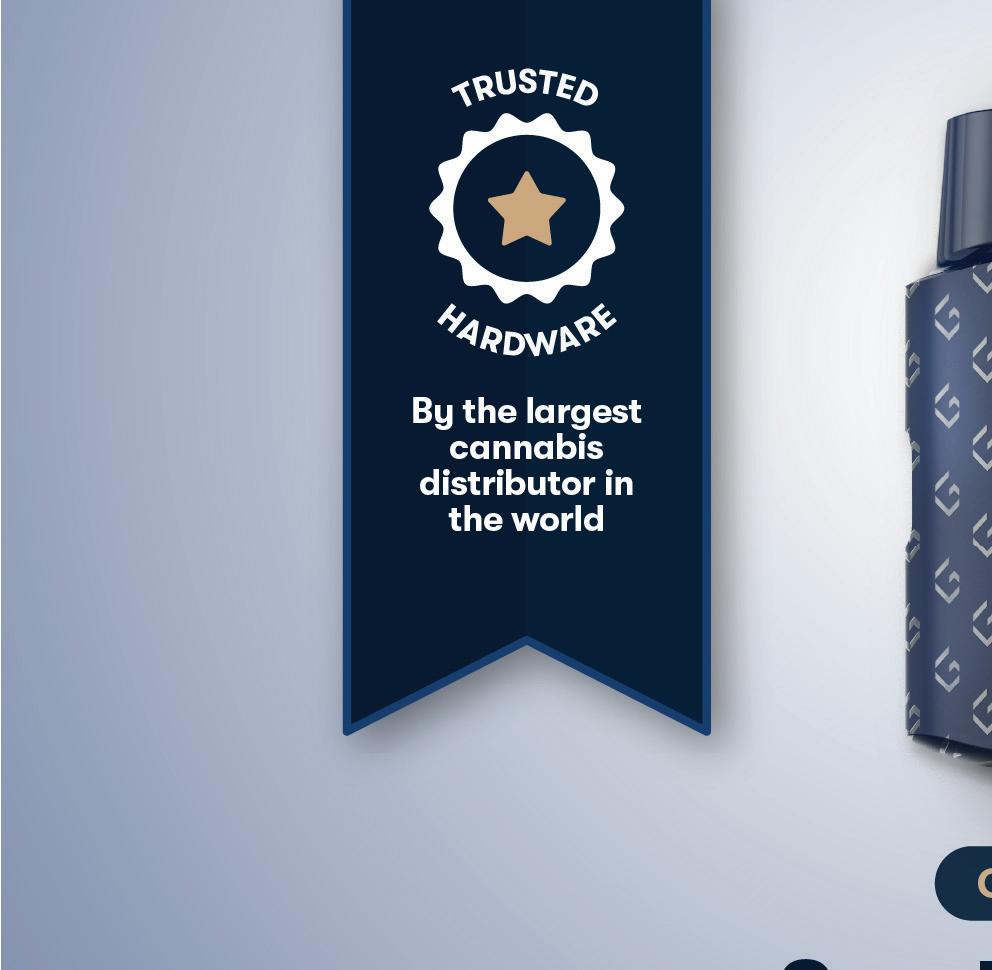
two years after Governor Tim Walz signed the enabling legislation. An early-2024 attempt to preapprove licenses by lottery was abandoned after several prospective applicants sued, claiming they were unfairly excluded from consideration.
Nearly 200 social equity applicants, including 193 who sought microbusiness licenses under the now-canceled preapproval lottery, may be able to open this spring. Unlike standard cultivation, retail, manufacturing, and distribution licenses, Minnesota will not limit the number of adult-use microbusinesses.


BY TARA COOMANS
AS COMPETITION FOR CONSUMERS HEATS UP and margins continue to erode, it’s never been more important for brands to understand their consumers. No longer a niche market, female consumers control trillions of dollars in purchasing power. Defining gender and age group is only the beginning; this is particularly true for adults born after 1981, because they view purchasing cannabis the same way they view buying any other consumer-packaged-goods (CPG) product.
There’s good reason to know your female consumers, because the distaff market represents a huge growth opportunity. According to Jointly, 55 percent of those who embrace cannabis for health or recreation are female. Use by women aged nineteen to thirty outpaces use by men of the same age.
men to buy the plant and plant-based products on the gray market. Women gravitate toward the legal market in large part because they trust dispensaries and the regulations that guide them.
Aggressive, price-driven sales tactics aren’t appealing to women. Female consumers want to be seen and understood, not sold. What’s more, they feel more loyal to brands who see them as complete participants in society: as friends, as sisters, as mothers, as aunts, as career professionals, as pet owners. Women want cannabis to fit into those places in their lives as opposed to defining themselves through cannabis culture.
AGGRESSIVE, PRICE-DRIVEN SALES TACTICS AREN’T APPEALING TO WOMEN. FEMALE CONSUMERS WANT TO BE SEEN AND UNDERSTOOD, NOT SOLD.
“A brand can never be too trusted,” is something I tell our clients, and nowhere is this truer than for cannabis brands. Female consumers are less likely than
Being overwhelmed by choice is a real problem for all consumers. According to research published in the scientific journal Nature, “women rely heavily on product ratings and reviews when making purchasing decisions. High star ratings and a large number of reviews increase
trust and willingness to pay, even for more expensive items.”
Whereas men may be more pricedriven when making choices, women are more likely to research brands and products using trusted sources including peers, magazines, and reviews, according to Nielson. This is especially true for luxury items. Blunt tactics like heavy-handed sales aren’t appealing to women, which is why brands that want to attract female consumers must aim to create relationships with female consumers.
Overall, female consumers are directly influenced by organizations with values and ethics. In particular, adult women born after 1981 compose the generations (millennials and Gen Z) that have completely normalized cannabis use. While there is much
growth potential in female consumers older than 45, millennials and zoomers already accept and feel educated about the plant.
Younger women are most attuned to the larger brand ideals of the products they purchase. Sustainability is a big concern for female consumers, who increasingly are aware of their own impact on the environment. Yet, younger females are sensitive to “greenwashing” and need to feel authentically connected to a brand to experience a sense of loyalty. This means brands need to walk the walk, not just talk the talk.
Brands that aim to connect with women need to focus on what’s important to them with empathy, lest their efforts feel hollow to the very consumers they’re trying to reach. What’s on the mind of the cannabis industry, no matter how well-
intentioned, isn’t necessarily top of mind for consumers.
Movements like “Cali sober” and “cannamoms” are driven by women who perceive cannabis as a better choice than alcohol. It’s important to understand women may not actively identify with the movements even though they participate in the lifestyle choices in growing numbers. I have twelve nieces and nephews in the Gen Z and millennial cohorts and many of them are Cali sober, but they had never heard the term until I recently mentioned it.
Cali sober, cannamoms, and other similar movements reflect self-care, but in a personal way rather than as social activism. Consumers may identify with the reasoning behind the movements more than the movements
76%
of female consumers believe they are portrayed in outdated ways 91% of women believe brands don’t understand them 35% of women prefer to buy cannabis from a female sales associate.
themselves. In other words, positioning a product or brand within a particular movement or issue is a self-limiting strategy. Understanding the “why” behind lifestyle choices allows brands to connect with women more authentically.
Women also are expanding their definition of self-care. The 4B movement, a radical ideology that advocates women not date, marry, or have sex or children with men, made its way from its native Korea to American shores via TikTok. While it hasn’t become a trend in the United States, the essence of the movement strikes a chord with young women who see limiting or removing themselves from romantic relationships, even for a short period, as a form of self-care. Rather than focusing on the movement itself, what’s important
75% of female consumers feel more loyal to a brand that promotes gender equality.
90% of millennial women are more likely to buy from socially and environmentally responsible companies
51% of women have boycotted a company because of its portrayal of women.
of women ages 21–24 prefer THC or CBD products over alcohol. of women ages 18–64 cite mental and emotional health as their top concern. 33% 50%
is understanding the motivational drive behind the behavior.
New California edibles brand CaliLily is connecting with women by making “sorry” a dirty word. The company actively engages women who are embracing their own definitions of success by featuring their insights on the CaliLily blog and profiling female budtenders in a series right here in mg Magazine. With this campaign, CaliLily signals acceptance of a wide range of life choices by celebrating empowerment, connection, and creativity, demonstrating the essence of the company’s assertion its products are “for any reason or no reason at all.”
It’s also important to understand women see self-care as fluid. Young women see nothing strange about moving into and out of self-care choices. It’s not unusual to see
a woman go from being a vegetarian for a long time to embracing an omnivorous diet. Young women, in particular, feel very in touch with their own needs and won’t hesitate to make choices they feel are consistent with those needs. The challenge for brands is to be there with motivational purpose so their female consumers take the brands on whatever self-care journey the women are on at the time.
Cannabis brands, like all other CPG brands, need to understand the entire experience of their customers and where the brand fits into the lives of female consumers. Instead of preachy, blunt tactics, embrace the multiple hats women wear and you’ll find many opportunities to meet women where they are. And that’s how brands should be connecting with women.

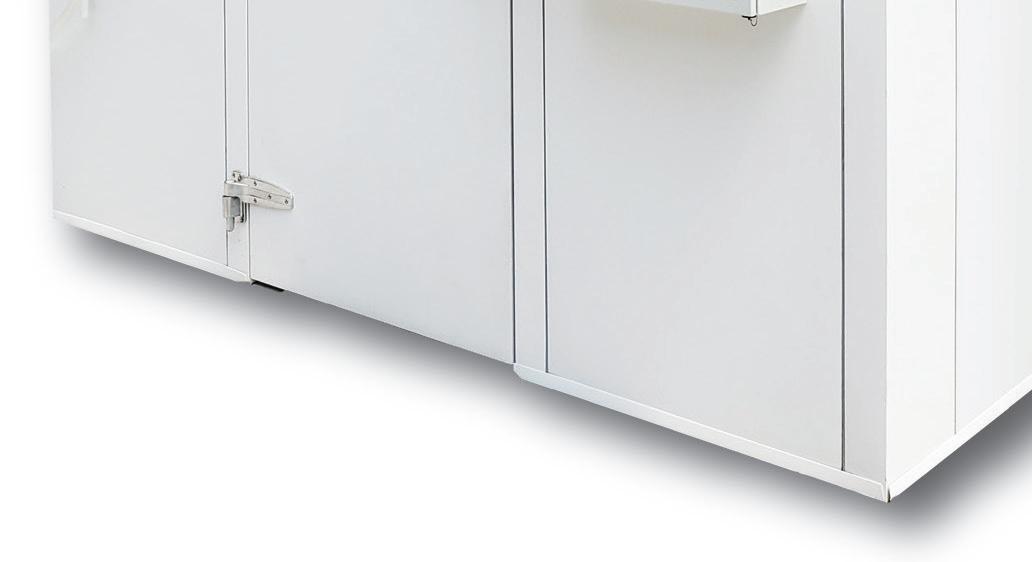

Our patented technology ensures the highest quality cannabis with:
• Reduction in Trichome damage of over 20% versus traditional methods.
• 16% higher terpene retention for enhanced flavor and aroma.
• Achieve higher yields with our patented Vaportrol® technology.
• Reduce labor costs through proven, more efficient operations.
Join the leaders in the cannabis industry who trust Cannatrol to deliver exceptional cannabis.
Custom systems for any size cultivation facility Retrofit for existing operating facilities.
Turnkey systems for all-inclusive needs and quick install.


After winning thirteen trophies at the recent Best in Grass Illinois Awards, Revolution’s five dispensaries safely can be said to be among the best in the state.
But there’s more to the dispensary chain than winning awards. The stores stand out as much for their design as their eponymous products. From sleek layouts to interactive product displays, Revolution is redefining what Illinois residents expect in-store and online.
“Our brand design came together through some awesome collaborations with our internal team, which is composed of cannabis lovers and cultivators with a real passion for cannabis culture,”
said Director of Marketing and Creative Oscar Carrillo. “We wanted our retail spaces to not just be functional, but also exciting and fresh. By mixing modern aesthetics with our mission to ‘provide a superior experience from seed to smoke,’ we make sure every visit is smooth and memorable. It’s all about making people feel connected, like they’re part of something special.”
Each Illinois dispensary (and a sister store in Maryland) was crafted to ensure it functions as not only an inviting retail environment but also a hub for education and connection. One of the most striking— and consistent—features of Revolution’s dispensaries is their ability to engineer a balance between form and function.
"IT’S ALL ABOUT MAKING PEOPLE FEEL CONNECTED, LIKE THEY’RE PART OF SOMETHING SPECIAL.
—Oscar Carrillo, director of marketing and creative



“We’re all about finding that sweet spot between looking good and working well,” Carrillo said. “Our stores are designed to be super-easy to navigate, with digital and physical elements working together to make shopping a breeze. We want folks to enjoy their time with us, so everything’s set up to be both practical and pleasing to the eye.”
Although the stores all employ recognizable branding elements, each location is adapted to its local market. For example, the store in Schaumburg, Illinois—a well-to-do suburb populated by young professionals who commute to nearby Chicago— evokes the spartan, industrial edginess of high-end technology retailers. While the high-tech design trend has been critiqued for a perceived lack of warmth, Revolution balanced industrial elements with rainbow hues, lush plants, and woodsy accents that add depth and charm.
“We team up with our cannabis guides [budtenders] to make sure each store has its own unique vibe,” Carrillo said. “It’s about creating spaces that feel like they belong to the community, where people can feel comfortable and part of the neighborhood they live in, like the grocery store or the coffee shop next door.
" WE’RE ALL ABOUT FINDING THAT SWEET SPOT BETWEEN LOOKING GOOD AND WORKING WELL.

“Our customers have been loving the seamless experience we offer,” he continued. “They dig how our digital and physical spaces connect, making it easy to find what they need. Plus, the design places our cannabis guides front and center, always there to chat and help out, which really enhances the whole experience.”
Indeed, Revolution’s thoughtful layouts feature expansive, open spaces and modern design elements that lead customers intuitively through the shopping experience. Displays are designed not just to highlight products but also to educate and engage customers. Whether through interactive digital screens or informative signage, Revolution ensures every visit results in more than just a transaction by providing opportunities for learning and discovery.
“Our Revolution Cannabis highlight wall is something we’re particularly proud of,” Carrillo said. “It’s a cool way for customers to explore and learn about our products. It’s interactive and informative, making the shopping experience both fun and educational.”
Dispensary visits can feel overwhelming, especially for midwesterners who may still be unfamiliar with cannabis retail environments and products. Revolution endeavors to ensure first-time visitors feel welcomed and comfortable from the moment they walk through the door.
“We want first-timers to feel right at home,” Carrillo said. “That’s why we’ve worked on having clear signs, friendly staff, and educational materials available. Whether it’s digital or print, we try to keep everyone informed and welcome. It’s all about creating a relaxed and inviting atmosphere.”
The Revolution team is particularly agile in the realm of digital integration, adapting store designs to make online ordering and subsequent in-store pickup as smooth an experience as possible. The team believes physical stores remain essential, but optimizing the digital-to-physical handoff is crucial to create the seamless experience consumers seek.
“We’ve really focused on designing our spaces to cater to everyone, with a mix of modern vibes and easy-tounderstand information,” Carrillo said. “We want to make sure everyone feels relaxed and can find what they’re looking for.
“And while we love our physical stores, we’ve also noticed that the majority of orders are placed online,” he added. “This means we put a lot of work into making sure the digital-to-physical pickup transactions are always running as smoothly as possible.”
Revolution’s primary customer base spans generations, backgrounds, and abilities, so the company designed its spaces to be universally accessible and inclusive. The brand’s commitment to modern, clean design makes the dispensaries as appealing to younger, tech-savvy consumers as to older, more traditional shoppers.

“The toughest part was definitely making sure our design is scalable and can work across different locations while still keeping that unique and evolving Revolution vibe,” Carrillo said. “It’s a balancing act, but we’re proud of how it’s all come together.”
With plans for continued expansion in 2025, the company already is working on new designs Carillo hopes will push boundaries in terms of aesthetics, customer experience, and innovation.
“We’re excited for our new stores coming online in 2025,” he said. “But while we are proud of our current stores, they would just be walls without the energy our retail teams and cannabis guides add to the space.”

JACKIE HOWZE IS A PASSIONATE ADVOCATE FOR THE TRANSFORMATIVE POWER OF THE PLANT. AS ASSISTANT MANAGER AT THE ARTIST TREE IN WEST HOLLYWOOD, CALIFORNIA, HOWZE WORKS TO CREATE A WELCOMING ENVIRONMENT WHERE EDUCATION MEETS EMPOWERMENT. FROM GUIDING NOVICES THROUGH THEIR FIRST EXPERIENCE TO SHATTERING MYTHS ABOUT WOMEN IN THE INDUSTRY’S EVER-EVOLVING CLIMATE, HOWZE IS ON A MISSION TO NORMALIZE CANNABIS AND HELP OTHERS DISCOVER ITS BENEFITS.
















What are some ways in which you have used cannabis to feel empowered?
I started working in this industry because I found it so interesting that cannabis was becoming non-taboo. For me, that made me feel empowered, because I knew if I could get into the industry, I could help other people feel better. The healing properties of the plant alone and the knowledge that it can not only change my day but also change someone else’s—that’s empowering to me. It’s a beautiful space to be in, and I’m glad I’m here.
In your experience, what do female consumers want?
I get a lot of women customers who like vapes and edibles. A few are into flower, but most women prefer the first two. I’m not really sure why that is. Maybe because they don’t want to be looked at a certain way because of the smell that often comes with smoking cannabis, especially considering we women already have to be so conscious of how we present ourselves in every interaction.
How do you educate women seeking their first experience?
I always start by asking, “Have you ever experienced cannabis before, or is this 100-percent your first time?” I try to figure out if they’ve ever been around the plant before even if they haven’t consumed—just a general idea of their history with the plant. From there, I start asking what they’re comfortable with, whether they like smoking, drinking, eating edibles, taking tinctures, etcetera.
Once we’ve established their preferred method for ingestion, I recommend they start with the smallest dosage, or I’ll try to give them something with CBD to let them know they can kick off with something a little less intense—dip their toe in first and figure it out from there.
What’s the most common question customers ask?
When asking about a product, I most commonly hear the question “How will it make me feel?”
What myth about being a woman in the cannabis industry would you most like to bust?
That girls can’t smoke heavy! Don’t get it twisted: Girls smoke. In fact, I feel like we smoke the most. I get together with my friends or fellow budtenders, and we are going and going and going. There’s this myth that girls can’t handle their weed, but we can definitely put it down.
What has your job as a budtender taught you about yourself?
It’s taught me to just be more self-aware and patient with others. When I first started budtending, I had to understand the different personalities that were coming in and also really understand that this plant is a medicine. Whether you’re self-medicating or you’ve got a prescription to use the plant for something very specific, cannabis can really help. Not every shoe fits on the same person, so I’ve learned to think more outside the box when helping others.
What has being a budtender taught you about the world?
That things aren’t black and white. I see so many different types of people come in, from elders to young people to medical patients who are using cannabis for serious health reasons. It’s really opened my eyes to how many different walks of life there are.
How has being an unapologetic advocate for the plant impacted your role?
It’s been a really positive thing. Understanding the plant can actually help people has helped me. I feel like that alone makes me push harder as a budtender, especially when I’m talking to people who came in for moral support but aren’t actually planning to partake. They want to see what’s going on, and it’s my job to show them “hey, this is normal.” It’s just like how a bar would function except, in my opinion, a dispensary is a lot less intense than that environment. It’s my job to let people know they don’t have to feel bad about enjoying the plant or being here, and I love that.
What advice would you give to your younger self about being unapologetically you?
I would say, “Just continue to keep going. Not everyone will like you and everything won’t always go your way, but you have to push yourself and never be afraid to stand out in a crowd.”

From the coast of California and the heart of two women comes CaliLily, a luxury line of cannabisinfused fruit chews. Made with premium ingredients, award-winning solventless live rosin, and precise dosage, CaliLily edibles provide the right experience every time. CaliLily’s #NotS*rry movement sparks empowerment, urging women to embrace their choices unapologetically. CaliLilyCanna.com


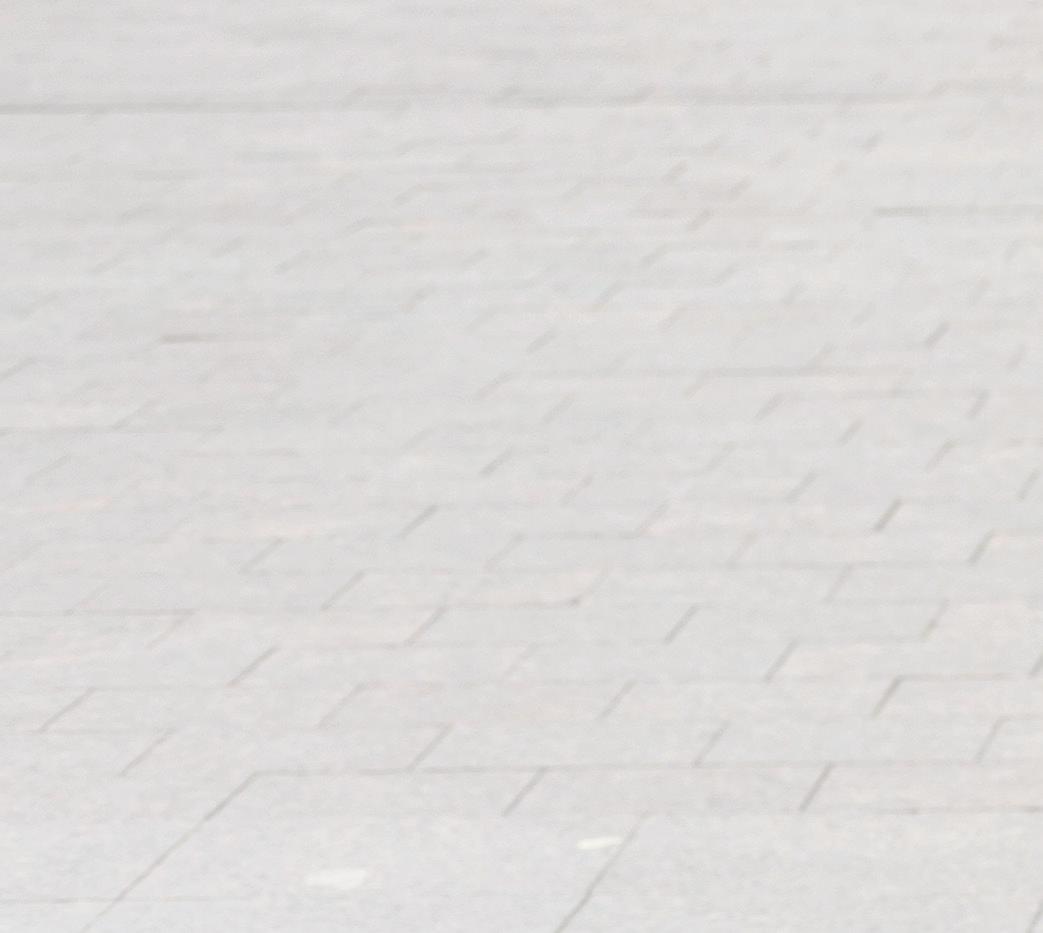


DR. CHANDA MACIAS IS OUTSPOKEN ABOUT IMPROVING HEALTH, ELEVATING WOMEN’S ROLES IN BUSINESS, AND EXPANDING OPPORTUNITIES IN THE INDUSTRY. SHE WON’T BE SILENCED.
BY TAMI KAMIN MEYER




The world would look like peace if cannabis were legalized internationally,” said Chanda Macias, PhD, a biomedical researcher, medical cannabis trailblazer, and passionate advocate for women and people of color in the industry.
Though the sentiment may sound like a distant dream, if anyone can help move the world in that direction through force of will alone, Macias is that person. She has never been shy about breaking new ground.
For example, when she opened the National Holistic Healing Center (NHHC) in Washington, DC, in 2015, she became the first Black woman to operate a dispensary in the nation’s capital. She also co-founded Ilera Holistic Healthcare, which made history not only as the first licensed cultivator and processor in Louisiana but also by partnering with Southern University to launch the first pharmaceuticalgrade hemp and medical cannabis products developed and marketed by a historically Black college or university.
“Patients generally seek medical cannabis as a last form of healthcare, but it should be their first line of healthcare,” she said. “I have seen the wonders it can do for patients.”
Although Macias, her husband, and their four children live in Washington, DC, her roots are buried deep in Louisiana, the first among the southern states to legalize medical cannabis. She was born there and her sister graduated from Southern University, so a business venture in the Bayou State and partnership with the school made sense from both entrepreneurial and emotional perspectives. Nevertheless, establishing a new endeavor so far from her current residence was challenging, she admitted.
“It was a hard decision, because I’m based in the Northeast,” she said. “But it was important to me personally to support my community in Louisiana and assist the African-American community in my birthright state with education about cannabis and how to be future leaders in the industry.”


She served as Ilera’s chief executive officer for three years—long enough to get the company through its initial growing pains—then hired someone to take her place and decamped to the capital to resume research and daily management of NHHC. She maintains an ownership interest in the Louisiana enterprise.
“I came back to the district to help women fight for their healthcare choices,” she said. Changes in the American political and legal landscape over the past few years have fortified her resolve in that regard. “In light of the [November 2024] election, I feel much more strongly that women have the right to cannabis use for their healthcare. The Women Grow platform is essential for those efforts.”
Women Grow is a movement empowering women to pursue leadership roles in the cannabis industry, and Macias is its fiercest champion. Since 2018, she has served as chief executive officer and chairwoman of the board, spearheading the organization’s mission to educate female entrepreneurs and provide the tools and connections that will help them become the next generation of leaders. The organization has impacted more than 50,000 businesswomen and patients since its founding in 2014, she said.
A tireless proponent of educating policymakers about maladies impacting primarily women, Macias also puts significant energy into convincing legislators and other skeptics that plant medicine can provide relief for conditions including menopause, fibromyalgia, and menstrual-related ailments. State legislators who write, support, and enact laws regulating the medical market typically do not include those conditions among the ones eligible for cannabis therapy. In Macias’s view, they’re ignoring the healthcare needs of half the population.
“Everyone who uses cannabis has a condition, whether diagnosed or not, but no state has female-oriented conditions as part of their qualifying conditions for medical marijuana,” she said. “How can female conditions like breast cancer not be included?
“Women are the healthcare providers for our families. Women,” she added. “Women are higher consumers of cannabis than men. So, we need women to speak up about how cannabis can be used as medicine and advocate for women’s rights.”
As ardent as she is about women’s health, she’s no less intense about women’s roles in the business world. That executive leadership in the industry is dominated primarily by white men—reportedly, only 39 percent of executives in the industry were female in 2023—concerns but does not discourage her. A woman’s place, according to Macias, is in the boardroom.
“That door is not necessarily open to us, but we are pushing through it,” she said. “We are fighting for our rights to be successful in this industry. In the larger world, women still have to fight for our healthcare, places on boards [of directors], and more, but we are not tolerating that anymore.
“We can’t stay here and stay silent,” she added. “We have to demand equality.”
She’s also troubled by disparities in funding between male-led and female-led endeavors. “Less than 3 percent of women [in the cannabis industry] get private funding,” she said.
During a Benzinga Cannabis Capital Conference in 2024, Macias spoke about creating synergies between women entrepreneurs and companies with financial resources. Participating in large networking events designed to help attendees pursue professional development is essential for entrepreneurial-minded women seeking opportunities in the industry, she said. Benzinga’s conferences and Women Grow’s Leadership Summit are two she recommends.
“A lot of women were able to secure resources” at the Benzinga conference, she revealed. “We are not seeing change overnight but incrementally, little by little. That is synergy. We have to band together and work together to ensure our industry survives.”
The atmosphere Macias wants to create feels like “a sisterhood—a coming together,” she said. “We’re vulnerable, but we’re coming together for support and love.”
However, she noted, that type of synergy is elusive and cannot be manufactured. “The vibe is different when I am attending an all-female conference,” she said. “It’s special. There is also something about daughters. They love so hard. Women love so hard. We are compassionate. The shared bond of our struggle brings us closer together.”



Personal and professional closeness with friends, family, and business associates may become more important as the industry progresses through a new federal administration that already seems harsh to many women and people of color. Hispanics are particularly vulnerable, Macias said, even though they represent a growing segment of the American population. According to the 2023 American Community Survey conducted by the U.S. Census Bureau, Spanish is spoken at home by 43.4 million residents aged five and older. That number has doubled since 1990.
In recognition of that reality, “we welcome Spanish speakers [at NHHC and Women Grow] and are dedicated to teaching Spanish to patients and entrepreneurs,” she said. “This last election proved the weight of the Latino and Spanish vote. Their support will be pivotal to the legalization of cannabis.”
She predicts the Trump administration will not be particularly friendly to the industry, despite the president voicing support for adult-use legalization in his home state of Florida during the 2024 campaign. The new president has too many other initiatives underway right now to expend political capital on an industry with less political clout than more established players. From her vantage point near the belly of the federal beast, Macias believes Congress will “slow-roll
legalization,” and the Drug Enforcement Administration may be unwilling to reschedule the plant.
In fact, she said, “I foresee increased scrutiny and [prohibitive] legislation.”
She also believes well-funded, politically connected industries like pharmaceuticals and alcohol will attempt to increase their influence on the industry, potentially leading to destabilization. On the other hand, she suggested, moving the plant to Schedule III under the Controlled Substances Act would provide an opening for Big Pharma to enter the game without running afoul of any federal pharmaceutical regulations. “That’s when legalization will occur,” she said. The global stage is a different matter. Medical legalization is sweeping across Europe, which, as a scientist, she believes is a good thing. But as the movement spreads, she hopes lawmakers and regulators build in inclusivity from the start. She calls influencing those decisions her “ultimate mission. I’ll do that one person at a time, one nation at a time,” she said.
Global legalization “would look like peace. World peace,” she added. “Cannabis creates an inner calmness and introspection. The global supply chain can be used to help reduce anxiety, stress, [post-traumatic stress disorder], and more.”
Unfortunately, she lamented, “I probably won’t see that in my lifetime.”
Women love so hard. We are compassionate. The shared bond of our struggle brings us closer together.
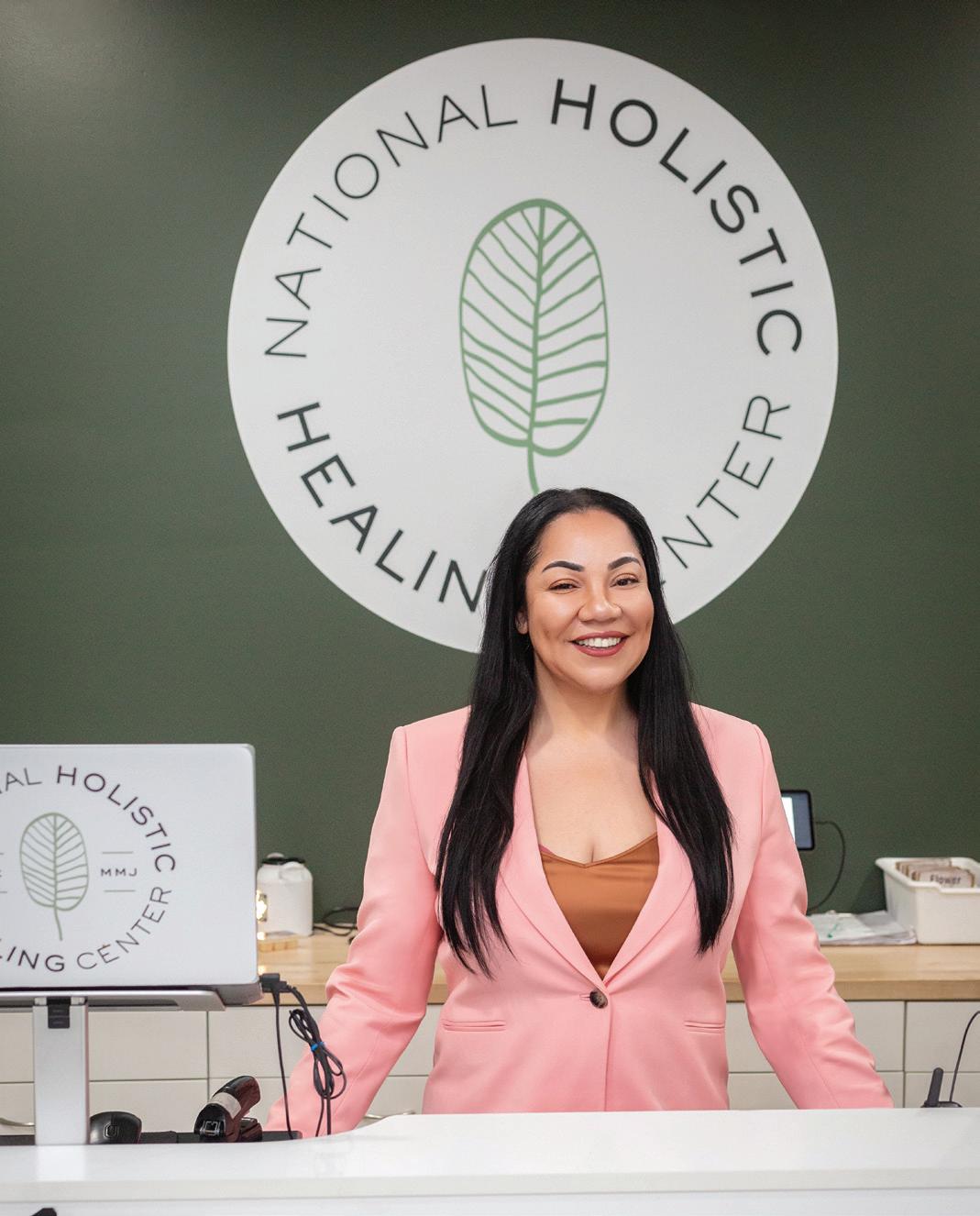


































BY TAYLOR ENGLE
Astrong public relations (PR) strategy can elevate a brand, strengthen consumer trust, and address the unique challenges cannabis companies face every day. But what separates a good PR campaign from a great one? To answer that, we connected with leading publicity professionals to uncover their secrets for executing successful campaigns.
The discussions unearthed seven key strategies for crafting impactful publicity campaigns, including emphasizing audience-focused approaches, consumer education, and unwavering consistency. We also examined common mistakes brands make, such as “spraying and praying” messages, using conflicting tones, and relying too heavily on one story. Here, we present the PR pros’ advice for how to avoid these and other pitfalls.
Whether you’re a seasoned operator or a new brand looking to refine your communication efforts, consider this your roadmap for success.
It sounds almost too simple, but patience and consistency form the backbone of any successful campaign. This means maintaining a consistent message and tone as well as delivering on promises made to both journalists and the audiences you’re trying to reach.
“Far too often, we see companies that pitch and forget, and then move on to a new topic, which they pitch and forget without tying anything into a common theme for the company, product, or executives,” said Proven Media founder Kim Prince, who speaks from decades of experience representing companies and individuals across multiple industries. “You don’t need to constantly reinvent your angles; in fact, you shouldn’t. Pick a campaign theme and build upon it.
“Be consistent in your content, pitch angle, talking points, and approach,” she added. “And always be consistent with who you’re pitching to.”
Before crafting a single pitch, make sure you have a clear and precise understanding of your audience.
“Writing the pitch and then creating the media list, that is 100 percent the wrong way to go,” said Grasslands founder Ricardo Baca, a former journalist. “Not only are you not acting strategically, but you’re wasting everyone’s time. Audience-first thinking is key. Are you talking to [businessto-business companies] in the United States? Are you talking to consumer lifestyle audiences in specific states, or only in California? These are the sorts of details you need to have a clear understanding of before you even write the first word of your pitch.”
Equally important is understanding the media landscape and finding the journalists, bloggers, and podcasters who align with your target audience.
“Throwing spaghetti on the wall and seeing what sticks is not a strategy,” said Marylyn Simpson, public relations director at Kip Morrison & Associates, a thirty-yearold agency that has represented clients in sectors from cannabis to fashion, food and spirits, retail, and celebrities. “You have to know who you are pitching so you can craft meaningful messaging. What does the public need to know about the topic at hand? I have to think about how my client is able to help educate the public on the given issues and cultural happenings in order to move the overall conversation forward about cannabis and its acceptance in mainstream America.”
When it’s time to pitch, professionals ensure the media package is comprehensive and meets the target audience’s expectations. Prince suggested including everything a reporter might need, such as press releases, executive bios, product descriptions, and high-quality images. It’s also important to provide a fact sheet that answers essential questions like “who, what, when, where, why, how, and how much,” she said.
Bear in mind journalists are often skeptical—especially when it comes to pitches about a plant some people still consider taboo—so leading with education can be an effective tactic.
“If they’re adhering to journalistic standards, they will need to provide balanced coverage, so offer yourself as a resource for credible information,” said Maverick Public Relations founder Shawna Seldon McGregor, who cut her professional teeth at New York agencies including Porter Novelli and The Rosen Group. “To stand out, tie your pitch to timely trends, real consumer needs, or untold stories that illustrate your brand’s impact. Show how your product or initiative has changed lives or improved communities.
“Ultimately, a story that’s surprising, relevant, genuinely new, and can show metrics of growth will always catch attention,” she added.
Adding layers of creativity and personality can make PR campaigns not only successful but also memorable. No campaign is only about selling a product or idea. At their heart, publicity pushes are about creating an emotional connection with an audience. Sales will follow.
“I’ve always believed adding a sense of fun and community relevance can elevate any campaign,” McGregor said. “A product launch should resonate deeply with the audience it serves.”
But how can companies achieve deep resonance? The process moves through predictable stages, starting with impeccable timing, a strong news angle, thorough preparation, and appropriate follow-up.
“Meaningful stories require persistence,” McGregor said. “Journalists are often juggling countless pitches, so it’s critical to follow up—but always with purpose and respect for their time.”
In other words, don’t email the same pitch to the same outlet three times. Tailor follow-ups with new angles or assets that add further intrigue to the pitch or make the journalist’s job easier and more rewarding.
Finally, never underestimate the power of surprise and delight. Whether it’s a cleverly packaged press kit or a campaign that incorporates unexpected moments of humor, tapping into joy can be a game-changer for earning attention from both the media and consumers.
If our collective goal truly is to destigmatize cannabis—and it is—gaining coverage in mainstream media is essential.
“Because we focus on ‘earned media,’ our top priority is to make sure the client is getting regular coverage in a multitude of publications,” Simpson said. “In cannabis PR specifically, getting stories in mainstream publications is very important, as it helps to destigmatize the plant and educate current and potential consumers.”
Creative, relatable angles can be a game-changer when pitching to mainstream outlets.
“I received a lot of media coverage for a former client when they started to service weddings with their cannabis products,” Simpson said. “It paints a picture for the journalist and puts [the product] in a new light they may not have considered before.”
One of the most common mistakes brands make is viewing publicity as a sales channel rather than a strategic communication tool. PR is designed to create long-term impact. It’s less about quick wins and more about fostering lasting connections and influence.
“Earned media is about building credibility and trust, which takes time and consistent effort,” McGregor said.
“Results don’t happen overnight. For example, securing a feature in a major publication or landing a spot on a top-tier podcast often requires months—or even years—of relationship-building and persistence.”
Another frequent misstep? Not understanding the differences between journalism and advertising. In a nutshell, journalism encompasses stories written about or including a person, product, or company over which the person or company has no editorial control. Stories over which a person or company exerts editorial control are called advertorial or sponsored content, and they are paid placements akin to infomercials on late-night television.
“Journalists are not there to promote; they are there to report,” McGregor said. “If a client shares information without clarifying it’s off the record, it’s fair game for publication. Brands need to approach media interactions with clarity, understanding, and preparation, ensuring everyone involved knows what’s on the record and what isn’t. Transparency and media training can help avoid these pitfalls and foster stronger relationships with members of the press.”
Relatedly, brands that hire PR firms to increase sales may want to rethink their strategy. A public relations firm can help elevate awareness about the company, its executives, and its products, but it should not be considered a replacement for a sales team or other marketing-directed efforts.
“In the business-to-business space in particular, understand that customers and potential customers need to know about your company’s product, record, and reputation before they will make a major purchase,” Prince said. “That’s where a PR firm comes in.”
It may take a little extra time, but when done right, a solid PR campaign primes your brand for more opportunities by establishing credibility in a way paid media can’t. It’s a slow burn, but a sustained, authentic presence in the media ultimately pays off.
Impactful publicity is about fostering connections over time, and that starts with showing respect to media partners.
Deploying a “spray and pray” campaign seldom works well, according to Baca, referring to a scattershot approach that distributes press releases, pitches, or story ideas to as many media outlets, journalists, and influencers as possible whether or not the outlet is appropriate for the topic. Pitching a story about dangerous children’s toys to a cannabis trade journal, for example, not only is a waste of everyone’s time but also makes the PR representative and the company he or she represents look tone-deaf. The same would be true of pitching a new line of edibles to Highlights for Children
“Don’t spray and pray. That’s vastly unacceptable,” Baca said. “Instead, use customized media lists for each initiative. As a journalist, I’ve gotten emails from PR people that just feel outright disrespectful. They don’t even spell your name correctly, or there is no name, or it’s the wrong name. The more I thought about it, the more I realized these PR professionals were disrespecting me and wasting my most valuable resources.”
McGregor emphasized building strong relationships with journalists and influencers is crucial.
“Without them, you have nothing,” she said. “You should always be thinking about how you can make a journalist’s life easier. Read their work, anticipate the gaps in their coverage where your client can add value, and subscribe to their outlets. If you want your company to be in their outlet, you should back it up by subscribing, reading, and understanding what they report on.”
To help maintain meaningful connections, consider investing in a tech stack to stay organized and make the process as seamless as possible.
“I’m currently obsessed with PRophet for drafting social posts and predicting which reporters might be interested in my pitch,” McGregor said. “Toggl Track keeps my entire team’s time tracked, and Basecamp ensures seamless collaboration. These tools free up time to help our team focus on what really matters: building connections and delivering results.”
When it comes to publicity, one of the most important steps in ensuring a successful campaign is setting realistic expectations from the very beginning.
By recognizing and acting on what it takes to achieve sustainable results, you’ll set up your team and your brand for success. Once you understand the time, effort, and strategic thinking required for successful PR, you’ll be able to establish a productive scheme that works.


Areport released by the National Institute on Drug Abuse (NIDA, a division of the National Institutes of Health) in 2024 confirmed what many business owners already knew: Women consumers play a huge role in the cannabis industry’s prosperity. According to NIDA data, women ages nineteen to thirty consume more marijuana than men of the same age. What’s more, Monitoring the Future, a survey of substance use behaviors conducted annually since 1975 by the University of Michigan’s Institute for Social Research, discovered more than one in three women in the United States now partake. Combine those data points with Reuters’ revelation that women spend more than men per dispensary transaction and Jointly’s disclosure that females compose 55 percent of those who use its product-rating app, and it should be no surprise manufacturers and retailers are rushing to offer products that target women.
But while more women are partaking and outspending their male counterparts, the business environment tells a different story. A 2023 report found women make up only 39 percent of executive leadership in the industry. The playing field clearly is not level. Nevertheless, female leaders play pivotal roles that have been and will continue to be crucial for the industry’s growth.
Our conversations with women company founders highlighted why members of “the fairer sex” make successful leaders. Common themes among the executives we spoke with include intentionality, ability to pivot based on feedback, humility, and cultivating a positive, empowering work environment. Women in cannabis are smart, focused, and know success comes from building a strong team and sticking to a solid mission while reaching outside themselves to support the greater good.
The industry doles out immense challenges for all players and erects even more barriers for women and minorities. But the women on these pages have mastered the art of turning challenges into opportunities to grow their brands. They are adaptable, empathetic, and dedicated to their visions, and their products resonate with their target audiences to achieve the brand founders’ visions.
BY MACEY WOLFER

HEYLO
Washington, Oklahoma
Lo Friesen, founder, chief executive officer, and chief extractor at Heylo, faced plenty of growing pains and financial strain as she built her product brand. But Heylo had the advantage of splitting revenue streams between retailing products and selling the company’s oil to other companies in the state, freeing up space for Friesen to focus on organic brand-building.
“This allowed us to make sure we were telling our story in the right way and really making our customers happy,” she said.
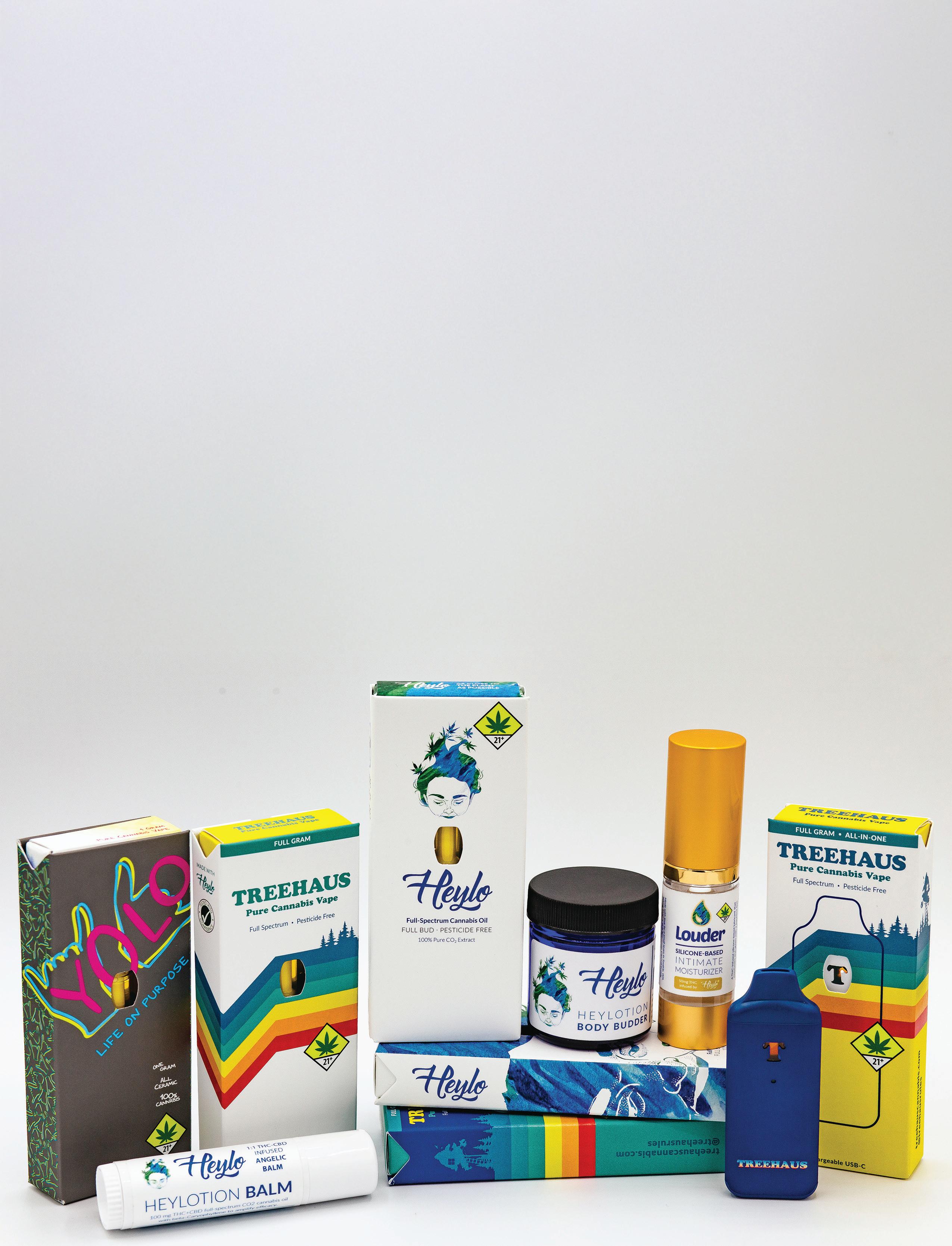
In an industry with high turnover rates and limited access to funding, Friesen recognizes the importance of cultivating a supportive, sustainable corporate culture that encourages long-term employment. Rather than viewing employees as replaceable cogs in a machine, Heylo management focuses on supporting individual and collective growth.
“We are vigilant about our culture, our values, and making sure the team feels aligned and able to contribute,” she said. “If they are growing and developing, the business is too—and vice versa.”
Friesen’s investments in people set Heylo apart. Customers are loyal to the brand not only because they perceive consistent quality in the company’s vapes and topicals, but also because Heylo maintains a deep connection to the communities it serves. Among the brand’s initiatives is Heylo Sessions, described as a “music-, cannabis-, and community-driven project to elevate the conscious use of cannabis through art.” One recent Sessions event, a sunset cruise across Seattle’s Lake Union, particularly resonated with Heylo’s target market, Friesen said.
“It was so special to be with the community again and hear so much incredible feedback about how long people were waiting for this, how many friends were made during the event, and just being able to support the art community,” she said.

CaliLily is relatively new to the industry, having debuted in 2024. Founder and CEO Liz Rodrigo launched the brand because she didn’t see herself—and women in general—represented in the market. Rodrigo and her silent partner bonded over similar overwhelming experiences and a shared desire for access to a brand that felt more representative of their needs.

“We saw an opportunity for a brand that would meet female consumers where they are in their lives, speak their language, and attract them with packaging and messaging that allowed them to confidently explore cannabis and integrate it as an ingredient in their lifestyle,” Rodrigo said.
The company was thrust into the many challenges the market faces, including the endless cycle of brands launching amid great fanfare, only to disappear quickly. The reasons for the phenomenon are legend, including California’s volatile, saturated market; accountsreceivable and regulatory obstacles; and a dearth of funding options. But women-owned brands seem particularly susceptible to short life cycles, Rodrigo suggested. She surmounts challenges by heavily investing in relationship-building and not buying into concerns about market oversaturation.
“When you walk down the wine aisle [in a traditional store], there are hundreds of labels you have to choose from,” she said, emphasizing her belief too much choice is not a critical issue. “The more people see me in different places, the more they’re going to realize this isn’t a brand that’s falling by the wayside.”
Intentionality is a big piece of Rodrigo’s brand-building puzzle. Her team went through many what-if scenarios to align all the details about product offerings and ensure sustainability in the company’s direction. The result is an edibles line with globally inspired flavors and a bold, unapologetic attitude boosting female empowerment.




Melany and Freya Dobson launched Hudson Cannabis in 2022, following years of operating a New York hemp farm. The sisters are following in their father’s footsteps—with a twist: Where he processed salad greens and delivered them to restaurants, they process weed and deliver it to dispensaries.


The company, which incorporates their brother Ben as a board member, is deeply rooted in family and love for the plant. “There’s something that happens when you’re not corporate,” Freya Dobson said. “It’s not like some random dude came in and said ‘I’m going to run this company.’ It was built from a heartcentric place.”
For the Dobson family and the team they’ve built, the company centers around its “why.” They started with a big question: how to restore a regenerative organic system and bring life back to land that previously was conventionally farmed.


“How we treat the earth is a reflection of how we treat each other,” Freya said of their mission. “I like to think of that as a foundation for our company culture. We’re extending that to all New Yorkers. It’s an extension of our values to bridge this important gap between agriculture and culture through a product that historically has been weaponized and stigmatized and used to put people in prison.”
Melany leads the company as its CEO. While it’s difficult to command respect as a woman in a maledominated industry, Melany is a fierce leader who came in with a vision from day one. “She’s made herself very respectable through the way she holds herself, how decisive she is, and how she listens, takes feedback, and communicates in a clear, concise, and direct way,” Freya said.




California
Sue Taylor’s passion for wellness and the cannabis industry is undeniable. After all, she’s still actively managing and scaling up her business, Mama Sue Wellness, in her late seventies. Last year, she made history as the first Black woman to own and operate a dispensary in Berkeley, California. “I haven’t retired because I love what I do,” she said.
Taylor wants other seniors to experience the same vigor and joie de vivre. Mama Sue products, developed in partnership with the Glass House Group, are aimed at helping seniors escape what she calls “the tyranny of pharmaceuticals.”
A savvy businesswoman, Taylor leaned into her appointment as a member of the California Commission on Aging to get through closed doors in order to speak with Berkeley City Council members about cannabis. She recalled rolling into a meeting wearing a suit and pearls with her background as a former Catholic school principal in her arsenal for persuasion. “After I had won their hearts, I said there’s another matter I’d like to speak to you about—the real reason I’m here,” she recalled. “I want to apply for a dispensary license.”
Since launching her popular wellness brand, Taylor has remained steadfast about her commitment to bettering the lives of the consumers who use her products. She’s equally devoted to the team she leads. “I empower people to be the best they can be, not just for the company but for who they are,” she said. “If they’re taking care and making sure they’re balanced in life, the best version will show up because they’re fulfilled.”
Taylor invests substantial time and energy into reminding the team who they are, why they are where they are, and what skills they bring to their professional and personal lives. Her lifelong devotion to education helps her focus on developing each individual, encouraging them to feel good about the work they do in service to others. “I always ask my people, ‘Do you love what you’re doing?’” Taylor said. “If you’re not doing what you love, you’re missing the ball.”


JUĀNA California
Rachel Xin launched Juāna in 2022 knowing exactly in which direction she wanted to see the industry move. “The future of cannabis is going to be female,” she said. Women-focused and centered on effects, her company’s products lend themselves to intentionality. From “focus” gummies to “arouse” vapes, she and her team developed a line that highlights the variety of ways women use the plant. Additionally, by dividing the company with distinctions between cannabis and hemp, Xin expanded product offerings and revenue streams through textiles and even apothecary candles.
Juāna’s products integrate cannabinoids, adaptogens, and influences from Chinese medicine to create holistic effects. The careful formulation draws in discerning consumers. “As a woman, before I consume anything I look at the back to see the ingredients, calories, and everything that’s going to affect my body,” Xin said. She believes many other women are equally cautious.
Given the challenges attendant upon marketing products in a highly regulated environment, she looks for opportunities to connect with the community and let women know Juāna’s offerings can complement a mindful lifestyle. Through partnerships with local sound baths, yoga studios, and intimate gatherings with food and like-minded individuals, Xin has expanded her brand’s reach outside the industry, as well.
Mirroring the deliberate choices she has made in product development and marketing, Xin leads her team with intention, too. “I’m not a leader who’s trying to micromanage people,” she said. “I respect them, build trust, and coach and mentor them when they need it.”


GARDEN SOCIETY
California, New Jersey, Ohio
As founder and CEO of Garden Society, Erin Gore knows all about hiring the right people to do the right things. With her products now available in three states and a team numbering more than seventy people, she’s had to pivot her hiring process to better suit the needs of a rapidly growing brand. Gore focuses on interpersonal skills and personality over resume specifics, because she’s learned what her company needs—and, conversely, would be better off without.
“Are [potential team members] going to ask difficult questions and push back but also be flexible?” she asked. “I need people who are able to see the vision but are okay with the ambiguity.”
The care she expends on selecting quality talent extends into other aspects of the nine-year-old brand, including to those who want to partner with or invest in the business. Gore believes “not all capital is the same,” and she has no trouble saying no when potential investors or partnerships don’t align with her vision.
“We have an incredible group of people who support us because of the company we’re building, the transparency we bring, and the values we have,” she said. “At the end of the day, we remember that we have the privilege to be a cannabis company making products that help people feel better. We’re on the cutting edge of doing something incredible for the community and industry.”

California, Illinois, Iowa, Minnesota, New Jersey, New York, Oregon, Pennsylvania
Breanna Neff launched brelixi in 2023, well before the infused-beverage trend gained steam. Since then, the brand's rapid-onset THC and CBD drink mixes have become a popular choice across multiple markets.
To overcome the industry’s lack of access to smallbusiness loans and other financial assistance, Neff employed her background in food science to structure her company with a lean operating model that allows not
only for management ease but also scalability. Similarly, she developed cost-effective manufacturing and marketing strategies to promote growth while remaining compliant with regulations.
Most of Neff’s marketing efforts rely on word of mouth. Even the company’s name provides an opportunity to tell the brand’s story: brelixi is a portmanteau of “Breanna’s elixirs.” “It was really important to tie in the founder story from the start,” she said. “I’m the food scientist, and I developed everything. People love transparency.”
To maximize the effect of marketing efforts, the company puts itself in front of its target audience where opportunities exist to make one-to-one connections. Neff admits word-of-mouth marketing isn’t the quickest or easiest path to prominence, but after months of hard work and dedication brelixi became a trusted resource for four to six wellness events each month, including events at yoga and pilates studios, acupuncture clinics, and sound-bath spaces. “If they host their own events, they can integrate brelixi at a low cost for them and us,” she said. The events are “an impactful, integral part of our marketing strategy.”
Neff credits much of her success to the team of advisors that came together shortly after she launched the business. Tapped from her personal network, the team has been invaluable in helping her make decisions that move the business in the right direction. She also relies on customer feedback to drive decisions, noting the small size of the business allows the team to adapt and implement changes quickly.


Michigan
Detroit-based Calyxeum adds “a female touch to a female plant.” After beginning as a cultivation and processing operation, the brand opened its first dispensary in 2024.
CEO Rebecca Colett has witnessed rapid shifts in the market, complicating budgets and operations. “It’s hard to remain profitable while the market is being flooded

[with products],” she said. “You can’t just grow weed and have people buy it like before. Now, we have to produce for our niche, which is more boutique, craft flower. Most of our customer base is women needing help with sleep or other issues.”
After watching colleagues close their businesses or be swept up in consolidations, Colett puts a lot of emphasis on curated, intentional product offerings. The effectsfocused brand prioritizes flavor profiles and hard-to-find genetics that are rich in terpenes.
Now leading a team of more than two dozen people, Colett invests in her employees in pursuit of a larger vision. Although sourcing talent can be challenging and time-consuming, she said the extra effort helps maintain the company’s culture and camaraderie. Calyxeum has been able to mitigate some common employer hardships through building a leadership track and fostering a spirit of autonomy among the staff. “If I need a manager, my first instinct is to think about who I can grow that’s already in the organization and can take over that role,” she said.
Despite federal condemnation of diversity, equity, and inclusion initiatives, Colett said Calyxeum champions DEI and intends to stay the course. “I’m trying to walk it like I talk it,” she said. “We’re 95 percent women and minorities. We are showing that it can be done.”
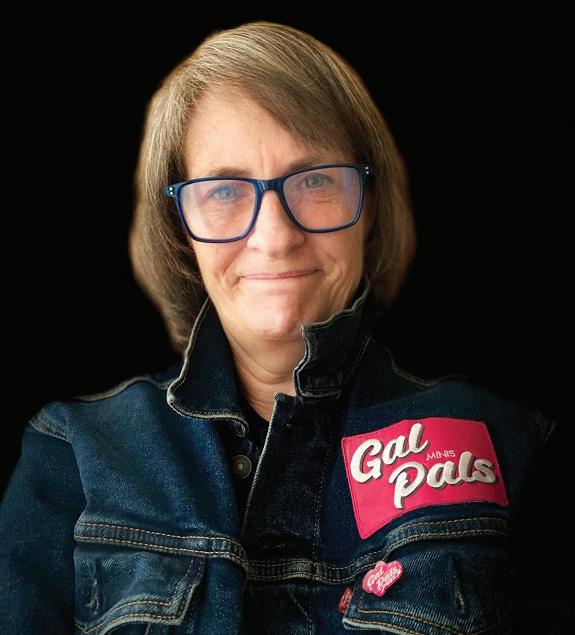
GAL PALS MINIS
Illinois
As the name suggests, Gal Pals Minis were created with women in mind. The miniature pre-rolls packed in tins resulted from Sarah O’Leary’s wish to bring women together. “I never wanted [the experience] to be solitary,” she said. “I wanted women to be together: gal pals. I wanted to give women permission to have fun with cannabis.”
Having fun and building meaningful relationships is integral to the brand’s personality. O’Leary also owns and operates Wacky Weed Tours of Ann Arbor, which provides guided tours of Michigan’s Tree Town, focusing on cannabis history and local dispensaries. The older business helped her make connections with industry players and get crucial feedback from consumers as she developed Gal Pals Minis. “People created the brand,” she said. “I had a hand in it, but it was all the insights fabulous women gave me that made the brand what it is.”
Feedback from the many women she spoke with led her to develop a key part of the brand: activity cards that are packaged inside the pre-roll tins. Created in response to queries from inexperienced consumers, the cards suggest activities customers can do for fun while they’re high.
One of the biggest challenges for O’Leary is convincing dispensaries her products belong on crowded shelves. Education is key, she said, revealing she regularly informs businesses about the size of the distaff market and explains how offering product choices that appeal to female consumers represents an enormous opportunity for revenue growth. According to O’Leary, men tend to shop for themselves, whereas women more commonly purchase products for themselves and others in their lives. “They’re buying for Aunt Bessie, Cousin Gertrude, and their husband who needs a topical for his knees,” she explained.

Heavily inspired by her old boss Bud Frankel (a gifted marketer who helped launch McDonald’s Happy Meal), O’Leary considers herself a cheerleader, mentor, and instructor for her team. She said her secrets for success are “humility, respect, and hiring the right people to do the right things for you.”
SIX FACTORS CAN HELP IDENTIFY SUPERIOR GENETICS THAT WILL WOW CONSUMERS AND BOOST CULTIVATORS’ CACHET IN THE MARKETPLACE.
BY CHRIS O’FERRELL AND LUCA BOLDRINI
Cannabis cultivation stands at a fascinating crossroads of science, history, and human ingenuity. Nowhere is this more evident than in the realm of genetics. Much like a blueprint underpins every aspect of a building’s structure and design, a cannabis plant’s genetic code dictates its growth habits, resilience and, ultimately, harvest quality. Genetic interplay shapes every characteristic from vibrant leaf pigmentation to complex terpene profiles and determines how well a plant will adapt to different environments.
What makes cannabis genetics especially intriguing is the story they carry from their ancestral origins. Over thousands of years, the plant has developed traits that
helped it thrive in diverse climates and conditions. This continuous dance with nature, amplified by centuries of human selection and cultivation, has led to strains that produce dense trichomes under intense sunlight or resist mold in damp, rainy regions. In modern production, harnessing this inherited adaptability can make or break a commercial operation, particularly when scaling up.
As cultivators, we rely on genetics to guide our decisions. Even the most advanced cultivation facility cannot overcome the pitfalls of poorly selected genetics. Conversely, superior genetics that combine resilience, commercial viability, and desired cannabinoid or terpene profiles offer a cultivator the best possible foundation for high-quality, high-yield harvests.
Multiple factors must be considered when sourcing genetics for large-scale production. From a cultivar’s disease resistance to how it performs under varying environmental conditions, a variety of critical decisions are required to ensure every plant begins on the right genetic footing.
A practical blueprint for navigating the factors required when selecting the right genetics looks like the following.
GENETIC STABILITY AND CONSISTENCY. Even the most sophisticated grow room cannot compensate for unstable genetics. Strains prone to hermaphroditism can threaten an entire crop by releasing pollen and disrupting overall yield and quality. When shopping for genetics, prioritize reputable breeders known for their rigorous selection processes. Their dedication to breeding stable cultivars ensures predictable performance and consistent phenotypic expressions, allowing you to plan harvest schedules, account for costing, and predict labor needs with greater confidence.
COST TO PRODUCE. When selecting a commercial strain with cost-efficiency in mind, focus on traits that drive down the cost per gram. For example, choose cultivars that offer higher yields (providing more product from the same inputs), require fewer “touches” or manual labor (reducing staffing expense), mature quickly (allowing for multiple harvests per year and lowering the annual cost per gram), and exhibit strong pest and disease resistance (minimizing both losses and the need for costly interventions).
PEST AND PATHOGEN RESISTANCE. Integrated pest management (IPM) programs are essential, but it’s always more cost-effective to start with genetics that naturally resist common threats like powdery mildew and spider mites. Resistant cultivars can reduce the need for chemical sprays and specialized treatments, lowering production costs and helping growers avoid catastrophic crop losses. Additionally, a cleaner final product enhances consumer appeal and meets increasingly strict regulatory standards.
FLAVOR/NOSE PROFILE. Terpenes are the aromatic compounds that define a strain’s character, influencing both its fragrance and consumer appeal. Whether your target market craves fruity sweetness or earthy spice, prioritizing genetics with a strong terpene profile can differentiate your product. A high terpene percentage not only elevates the user experience but also positions your brand to stand out in an increasingly competitive market.
FINISHING TIMES. Speed matters in commercial production. Strains with shorter flowering periods—ideally, shorter than nine weeks—allow multiple harvests per year, maximizing a facility’s output. Fast-finishing genetics also reduce energy and resource consumption, since the grower can complete each cycle sooner. Over time, this efficiency translates into higher overall profit margins.
BAG APPEAL. Trichome visibility, bud density, and general “frostiness” are crucial for capturing consumers’ attention. Even if a strain tests well for cannabinoids and terpenes, subpar appearance can turn buyers away. When selecting cultivars, look for those with a proven track record of producing vibrant colors, glittering trichomes and consistent nug structure—traits that contribute to repeat purchases and brand loyalty.
Finally, be sure to work with breeders who have meaningful data points for how the selected cultivars react to different crop-steering strategies. Solid, accurate data points on cannabis genetics are essential for predicting growth behavior and optimizing growing conditions, enabling consistency and uniformity in crops. They ensure high-quality flower production by providing insight into cannabinoid and terpene profiles that cater to consumer preferences and can help identify specific flavor profiles that may be missing from a dispensary’s menu offering. Ultimately, data supports informed selections that enhance product diversity and appeal in the market.
Focusing on stable, high-performing genetics from the start can make the difference between a thriving commercial operation and one that struggles to stay afloat. By weighing these factors—stability, production cost, resistance, terpene profile, finishing time, and aesthetic appeal—cultivators can build a strong genetic library tailored to succeed in an increasingly dynamic market.
BY DAVID KOOI
Cannabis is personal. That’s something we’ve learned through years of analyzing consumer data at Jointly.
Traditionally, the industry has been male-dominated, from executive leadership to product development, but when we look at how men and women experience products, a nuanced and revealing picture is painted.
The data we’ve collected from hundreds of thousands of real-world consumer experiences tells a consistent story: Women report success rates about 10 percent lower than men’s across nearly all goals, from relaxation and stress relief to improved sleep and pain management. The gap is widest when it comes to enhancing exercise (13.5 percent better for men), easing everyday pain (13 percent better for men), and physical recovery (12 percent better for men). Shockingly, there is no goal among the twelve we track where women report better results than men.
At first glance, this might suggest cannabis simply is less effective for women. But the data also reveal an important insight: Product selection matters, and women are finding success when using certain product types tailored to their needs. For example, when employing products to relax, women report infused beverages outperform flower by 10 percent and beverages outperform tinctures by nearly 30 percent. Meanwhile, men continue to have better experiences with flower for relaxation, with flower outperforming beverages by 8 percent among men. This is before even getting into the nuances of cannabinoid and terpene combinations. Choosing the right product format for goals is crucial.
This is not a small detail. Instead, it’s a signal the industry has an opportunity to serve female consumers better. Women embrace topicals for easing everyday pain and report 20-percent better results with topicals than when using tinctures, flower, or vapes for the same goal. Meanwhile, men report very little use of topicals, instead rating tinctures as the most effective for pain relief. Similarly, for enhancing
intimacy, women report the best results with dabable concentrates, while among men dabable concentrates are the worst-performing product type for that goal.
Dosing is also especially important for women due to the relationship between THC uptake and estrogen levels. Research suggests estrogen can influence how efficiently THC is absorbed, meaning women may experience varying effects depending on hormonal fluctuations. This makes precise and mindful dosing an essential factor in optimizing experiences for female consumers.
What does this mean for the industry? It’s clear the plant affects men and women differently—not just in terms of general effectiveness but also in how product selection impacts delivery of the best experiences. Women may not be getting the same benefits from cannabis as men do, but they aren’t giving up. On the contrary: They’re seeking out formulations and experimenting to find formats and specific products that work best for them.
For brands and retailers, this presents an opportunity. Historically, the industry has been shaped by male preferences, from strain selection to product format. But women compose an increasing share of the consumer base—55 percent of Jointly’s users are women—and increasingly they report that what works for them lies outside the traditionally best-selling product categories. The rise of infused beverages for relaxation and the embrace of topicals for pain relief are prime examples of how female consumers are driving category expansion and product innovation.
Cannabis can and should be optimized for the individual. If women consistently report lower success rates, it’s not because plant products are inherently less effective for them. It’s because the industry hasn’t done enough yet to meet their needs. The data is clear: Women already are leading the charge in finding what works best for them. It’s time for the industry to follow their lead.


Priscilla Vilchis, known as HollyWeedQueen on social media, is an industry pioneer. As chief executive officer of Premium Produce, she was the first Latina to obtain licenses to cultivate and produce medical cannabis in both Nevada and California. Her brand, Reina, offers hand-manicured boutique flower and often collaborates with celebrities including Ric Flair, Lil’ Kim, and Ice Cube. One million Instagram followers attest to her status as industry royalty.




Drag performer and cannabis advocate Laganja Estranja promotes legalization, education, and LGBTQ+ inclusion while collaborating on cannabisinfused products and merchandise.


Podcaster Tegan Scates founded Bloomly, a platform dedicated to reshaping women's perspectives on cannabis. The Bloomly Podcast provides a safe space for shattering stereotypes through community and conversation.
@holkofficial
The creative craftsfolk at Stockholm-based Holk “design nice things for people who love w••d.”
protect sensitive information and reputations. ADR methods are typically informal and solution-focused, fostering mutual understanding and often allowing for a resolution with
